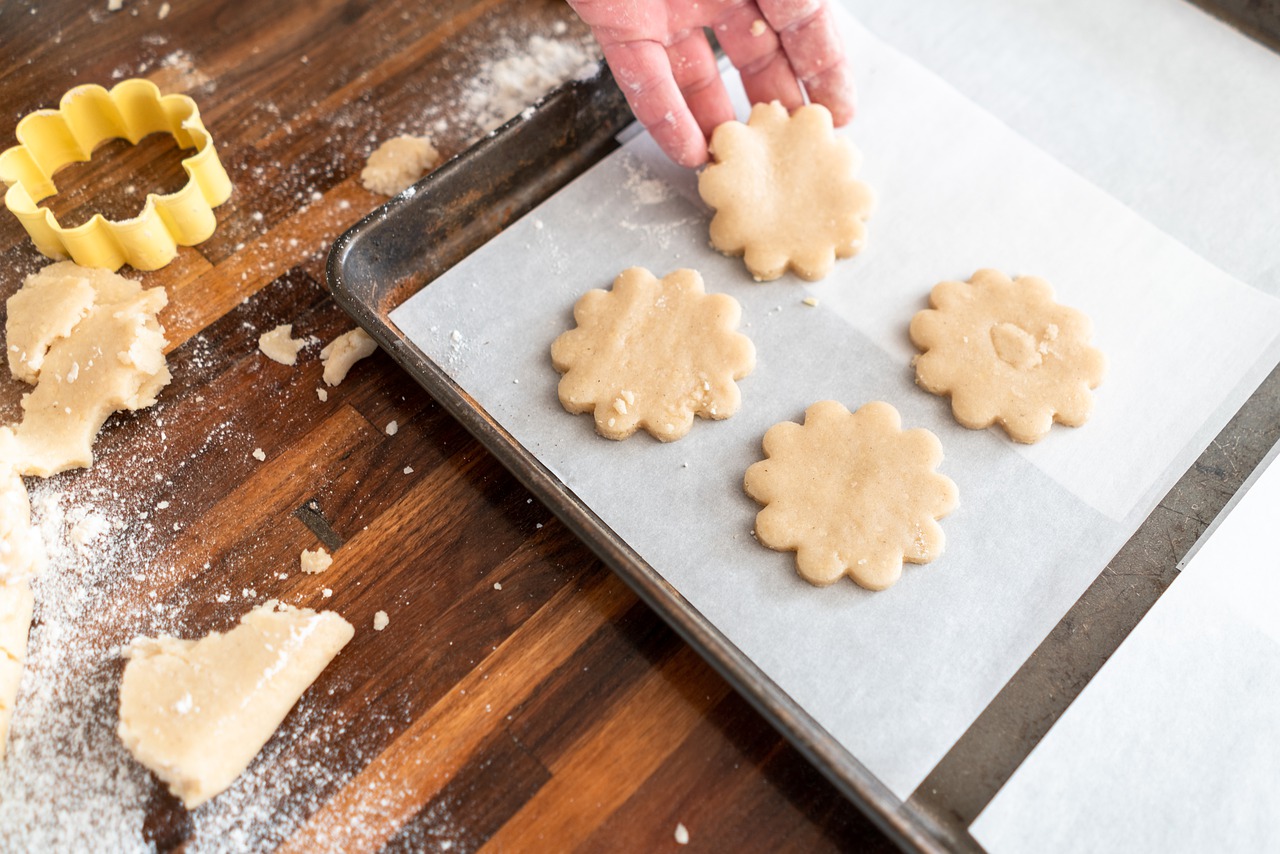Deciding on the right liner for your baking needs can be complicated, especially if you want to save a dollar on the side by buying in bulk. Suppose you’re confused about baking paper or parchment paper and would like to know more about other types of liners that may be helpful in baking cookies. In that case, you need to familiarize yourself with the various commercial liners for various baking needs.
What Is Paper Used For Baking Cookies?
The ideal type of liner for baking cookies would have to be parchment paper, the baking paper used in many bakeshops. Parchment paper is special because it is naturally moisture-resistant, and it has been layered with silicone to improve its bake-worthiness. What does this mean for your cookies?
Using fresh parchment paper means you will have a crisp and wonderful batch of cooking each time, and slivers will not stick to the bottom of the cookies.
Sliver coming off the baking liner is common when you use wax paper or aluminum foil, simply because they tend to fall apart when you add any mechanical pressure to the equation.
Removing the cookies is a type of mechanical pressure. If you don’t have good old parchment paper, we recommend using aluminum foil.
Wax paper does not bring good results, and we recommend that you use these for wrapping bread and sandwiches.
There is another reason why we recommend using parchment paper despite being slightly more expensive. Save money and time as you keep using it as it is very efficient for baking. Making unfit substitutions when working the oven can cost you time – and more time in the kitchen means you’re consuming time that is best spent somewhere else.
With parchment paper, you can get good results every time without having to worry about wrecking the liner when you’re ready to remove the cookies. Also, you can easily use parchment paper for easily measuring the dry portion of ingredients in your recipe. Instead of messing up your kitchen counter with so much confectioner’s sugar and flour, extend a measure of parchment paper on the kitchen counter to catch any overflowing flour or sugar.
What Can I Use in Place of Parchment Paper for Baking Cookies?
There are several alternatives to parchment paper that you can use instead of this liner when it’s not available in your kitchen. If you need to serve the cookies on a tray or platter, you can use wax paper. However, wax paper cannot be used inside the oven or any other heating source type. The wax on the paper will combust. However, wax paper is naturally moisture-resistant, so it is ideal for serving freshly baked cookies.
The next alternative is aluminum foil, as it can go into the oven and won’t combust, unlike wax paper. This product can also be used for various cooking methods, including roasting and pan-frying (in some cases). The aluminum foil is the most versatile of all known commercial liners. However, this liner’s big downside is that it is not nonstick, and you probably have to remove small slivers of aluminum from the bottom of the cookies just before serving them. This is a small trade-off, especially if you do not have parchment paper at home. Other aluminum foil uses include proper plating of pastries and dessert, cleaning the oven (use it as a catcher), and steaming.
Can I Use Aluminum Foil Instead Of Parchment Paper For Cookies?
Yes, a nice roll of aluminum foil is a nice partner in the kitchen if you run out of parchment paper. With it, you can avoid burning the bottoms of your cookies. However, as we have mentioned earlier, it can be tough for large quantities of cookies because you have to make sure that the slivers that come from the aluminum foil are removed before serving. Keep this in mind as it can be very easy to miss the small slivers, and while the person eating can remove these reminders, it’s best to serve the cookies minus the aluminum liner.
Can You Make Cookies Without Baking Paper?
Yes, you can make cookies without baking paper or parchment paper. If you are serving the cookies, grab some wax paper and use that as the liner on the basket or tray for serving. If you are still baking the cookies, you can use some aluminum foil for baking your cookies without risking them burning safely. Now, if your kitchen is empty, you can use flour, butter, or oil. These are ‘old school’ liners for baking, and it takes a while to master how to evenly add these ingredients to the tray to serve as bottom protection for the cookies.
We recommend putting some butter or oil on a kitchen towel and spreading the fat evenly over the tray. Ensure that every square inch of the tray is covered with oil before placing any dough on it. If not, you risk burning some of the dough in the process.
If you don’t want to use fat as a nonstick layer for your cookies, the next alternative is flour. Sprinkle the flour over the tray evenly before adding the dough. Keep in mind that as much as this technique is cool, it may not be used when you are baking any cake. The three ingredients we mentioned here are simply emergency methods and should not be regularly used when baking. Use these ingredients and methods only when you have run out of the more good liners.
Can you use cooking spray, too? Yes, you may. Spray an even layer on the baking tray before adding cookie doughs one by one. This is not a new technique at all. In the classic days of baking, it was very common to use fat or nonstick spray for making a baking tray nonstick, so the cookies would also cook properly.

